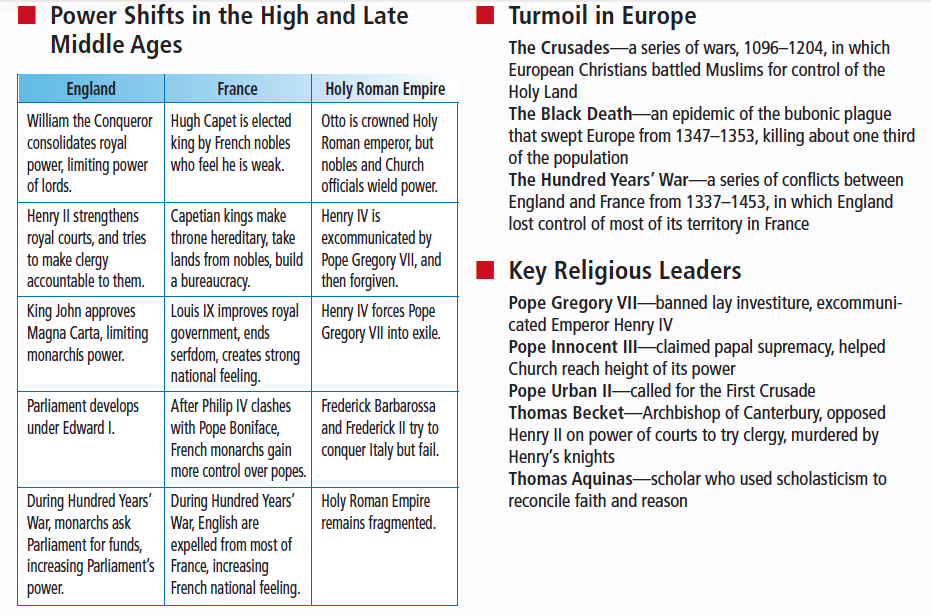Summary
 Past Posts –
Past Posts –
AP 23.195 Crash Course – The Dark Ages (Review)
AP 23.194 Medieval Europe – Decline of Feudalism and the End of the Middle Ages
During the Middle Ages, strong monarchs in England and France worked to increase their land holdings and the numbers of their subjects. In England, people established political traditions such as common law, the jury system, protection of rights, and representative assemblies. In France, strong leaders built an efficient bureaucracy, set up the Estates General, and expanded their territory.
Conflicts with the Church and with independent nobles prevented Holy Roman emperors from unifying Germany. The Church and German emperors finally resolved the issue of investiture with the signing of the Concordat of Worms. However, new struggles arose as Pope Innocent III claimed supremacy over all rulers.
During the Middle Ages, most people in Western Europe were unaware of advanced civilizations in Asia, Africa, and the Americas. The Crusades introduced Europeans to a wider world. The Crusades also led to increased trade and more powerful monarchs.
Sparked by improving economic and political conditions, a revival of learning took place in the High Middle Ages. Writers across Western Europe began publishing works in the vernacular. Gothic cathedrals served as symbols of wealth and religious devotion. However, by the late Middle Ages, Europe was in a period of decline.
The Black Death wreaked havoc throughout Europe. The Church suffered from poor leadership and accusations of corruption. England and France fought the Hundred Years’ War, in which Joan of Arc emerged as a French national hero.
You must be logged in to post a comment.